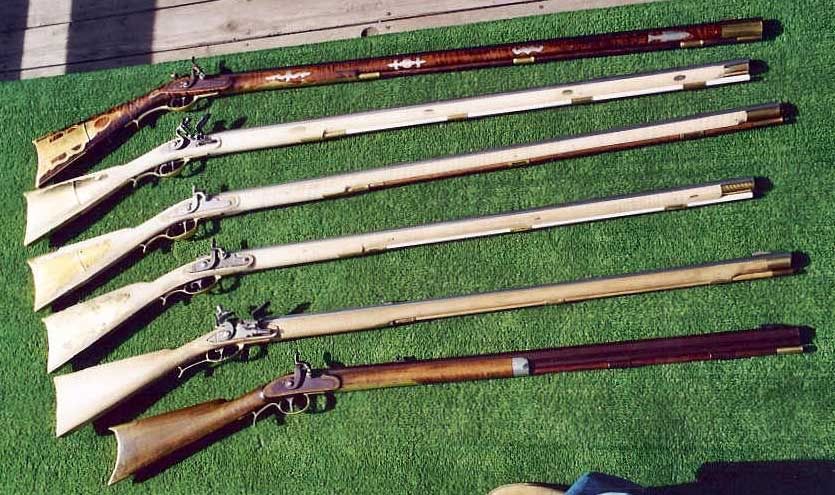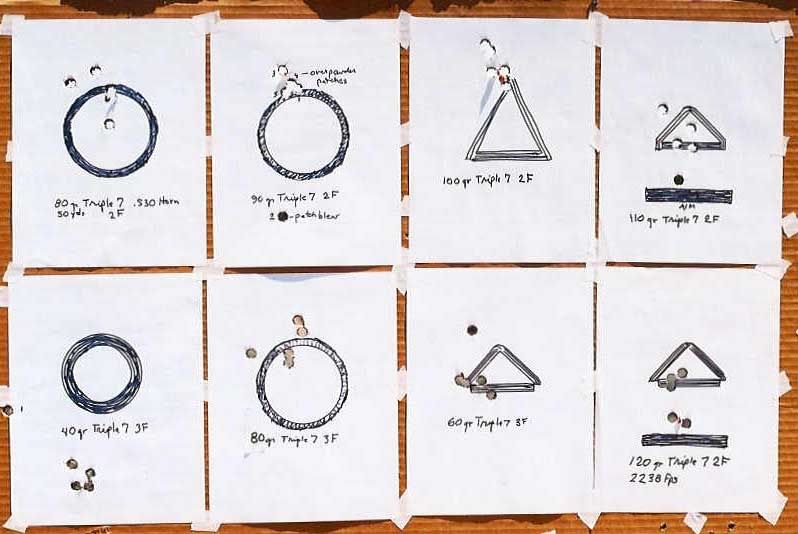These are some rifles I built. The third one down is a copy of a Christian Hawken caplock, .54 caliber 42" Green Mtn barrel,Siler caplock. Can't find a single photo now. I used CCI #11 caps to test Triple 7 3F and 2F on May 20,2002.
Hodgdon's "Basic Muzzleloading Manual" for a .54 caliber patched roundball, .530 and .020 Ox-Yoke patch shows: 80 grains, 1667 fps. 90 grains 1775 fps. 100 grains, 1846 fps. 120 grains 1943 fps. They use 120 grains with the conicals up to 425 grains. So I tried these loads in the C. Hawken rifle, using pillow ticking and leather over powder wads. Shot at 50 yards over a chronograph, testing different target shapes.
Top left, 80 grains of T7 2F, first shot with clean bore is low in velocity, mean of 5 is 1810, extreme spread is 163, without first shot, 1840/33. Second, 90 T7 2F, 1946/71. Patch blew on 2nd shot then I went to OPwads. W/O #2, 1956/49 fps. Third, 100 gr T7 2F, 2048/45. Fourth (top right). 110 gr T7 2F, 2161/41. Then Bottom RIGHT, 120 gr T7 2F,2238 fps, 58 spread.
Bottom left, shot after the 120 gr load with no wiping or cleaning at all in this test, first shot out at 9 oclock, apparently a torn patch. 40 grains of T7 3F (Three F now). 1428 fps, 117 spread, but exclude shot 1 and it is 1445/108. Fifth shot was also way slow. Second over, 80 gr T7 3F, 1960/60. Third over (but shot second in 3F order), 60 gr T7 3F, 1698/96.
These velocities astounded me, being about 200 fps over what Hodgdon published, so I phoned Chris Hodgdon to discuss them, thinking perhaps the 110 and 120 grain loads were way too high in pressure. He said "Well, you don't get something for nothing", whatever that means. So, Triple 7 does develop much higher velocity than Goex black powder. I do not use these heavy loads, but this is info that some might find useful.






